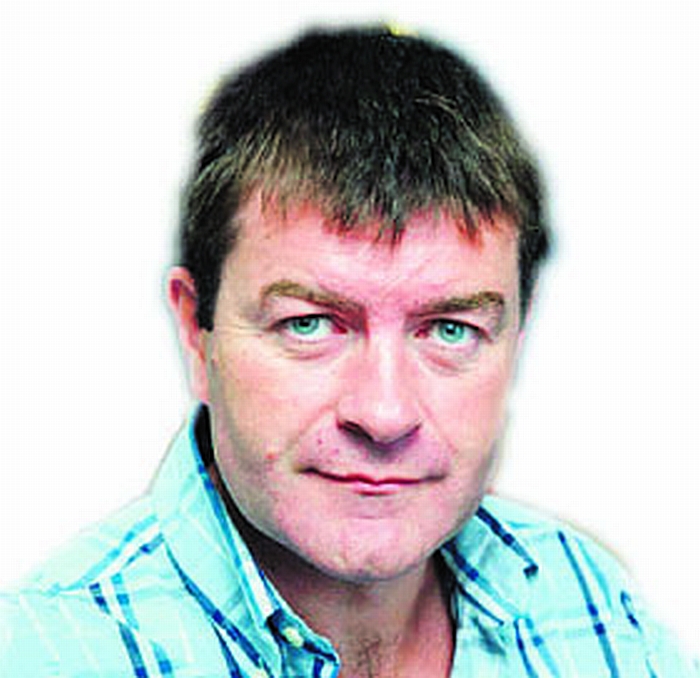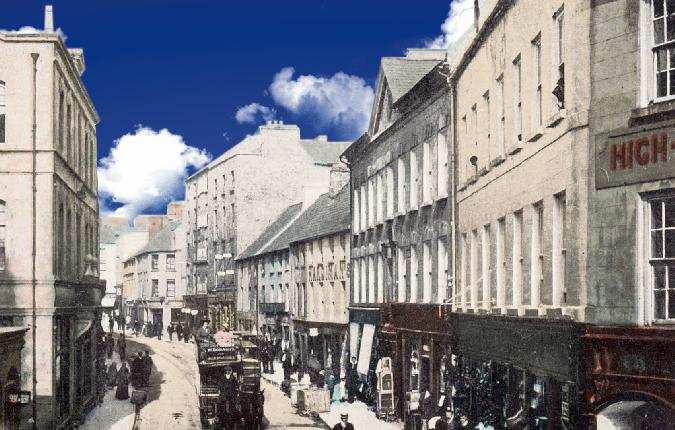Archive News
Noble cause but Galway United fans ignore reality

Date Published: {J}
GOD bless their innocence. Does the Galway United fans group which has applied to the FAI to enter its own team in the 2012 Airtricity League realise the magnitude of the task they would be taking on if their application is successful? It’s plain lunacy in my view and will only serve to compound the current woes of Galway soccer.
Never mind all the organisational work that has been to be done off-field, trying to assemble a half-decent squad under John Brennan already appears a hopeless task as the new club is unlikely to have a financial backer – there’s only so much money that table quizzes can raise – and with Mervue United and Salthill Devon already in the First Division, the odds are stacked against the Supporters Trust in more ways than one.
Furthermore, the suggested name for the club – Galway United Supporters Trust FC – is a mouthful and, to say the least, unappealing, while it’s probable that the terraces at Terryland Park next season would be relatively empty too for the team’s matches, given that the squad is most likely to comprise of largely youthful unknowns with the odd journeyman player thrown in.
Yes, I admire Ronan Coleman, Sean Dunleavy, Pat Burke , Mike Daly and John Flannery and the other members of the Supporters Trust for their tenacity and understandable anxiety not to let the name Galway United die – their publicly stated desire to return the club to its true community roots is a good pitch too – but what’s the point of it? Three city teams campaigning in the First Division next season is just off the wall.
Mervue, Salthill and the ‘supporters team’ will all be trying to pull from nearly the same (and diminishing) pool of true local football supporters who are prepared to leave their cash at the turnstiles, while the prospects of one of the clubs making a promotion charge are also automatically reduced due to the prospect of the best Galway talent being spread over three teams.
Though there is some UEFA backing for greater supporter involvement in the administration of clubs, I find it difficult to imagine that the FAI will grant the United Trust a licence to compete in the League of Ireland next season due to the current circumstances in the city. Coleman and his admittedly dedicated band of United fans may be “astounded by the messages of support by Galwegians from all over the world” and there was a reasonable crowd at a public meeting in the Claddagh Hall last Sunday, but their noble aspirations are out of touch with reality.
Though I am a hurling man from Tipperary, having reported on United matches for many years in the eighties and early nineties, I too feel a certain sense of sadness that the version of the club which has stood the test of time since first joining the League of Ireland in 1977 has folded, but trying to cobble together a poor imitation with little realistic hope of the team being successful is surely not in local soccer’s best interests.
I think back on all the sterling United servants over the years – the late Miko Nolan, Johnny Glynn, John Mannion, Derek Rogers, Stephen Lally, Gerry Daly, Denis Bonnar, Kevin Cassidy, Martin McDonell, Noel Mernagh, Tommy Lally, Paul McGee and Jimmy Nolan to name just a few – but the last couple of seasons have been a real struggle, on and off the field. Winning just one of their 40 competitive matches in 2011 tells its own story. Galway United, as we used to know it, is gone. And it’s time to accept it.
For more, read this week’s Connacht Tribune.
Galway in Days Gone By
The way we were – Protecting archives of our past

People’s living conditions less than 100 years ago were frightening. We have come a long way. We talk about water charges today, but back then the local District Councils were erecting pumps for local communities and the lovely town of Mountbellew, according to Council minutes, had open sewers,” says Galway County Council archivist Patria McWalter.
Patria believes we “need to take pride in our history, and we should take the same pride in our historical records as we do in our built heritage”. When you see the wealth of material in her care, this belief makes sense.
She is in charge of caring for the rich collection of administrative records owned by Galway County Council and says “these records are as much part of our history as the Rock of Cashel is. They document our lives and our ancestors’ lives. And nobody can plan for the future unless you learn from the past, what worked and what didn’t”.
Archivists and librarians are often unfairly regarded as being dry, academic types, but that’s certainly not true of Patria. Her enthusiasm is infectious as she turns the pages of several minute books from Galway’s Rural District Councils, all of them at least 100 years old.
Part of her role involved cataloguing all the records of the Councils – Ballinasloe, Clifden, Galway, Gort, Loughrea, Mountbellew, Portumna and Tuam. These records mostly consisted of minutes of various meetings.
When she was cataloguing them she realised their worth to local historians and researchers, so she decided to compile a guide to their content. The result is For the Record: The Archives of Galway’s Rural District Councils, which will be a valuable asset to anybody with an interest in history.
Many representatives on these Councils were local personalities and several were arrested during the political upheaval of the era, she explains.
And, ushering in a new era in history, women were allowed to sit on these Rural District Councils – at the time they were not allowed to sit on County Councils.
All of this information is included in Patria’s introductory essay to the attractively produced A4 size guide, which gives a glimpse into how these Rural Councils operated and the way political thinking changed in Ireland during a short 26-year period. In the early 1900s, these Councils supported Home Rule, but by 1920, they were calling for full independence and refusing to recognise the British administration.
“I love the tone,” says Patria of the minutes from meetings. “The language was very emotive.”
That was certainly true of the Gort Rural District Council. At a meeting in 1907, following riots in Dublin at the premiere of JM Synge’s play, The Playboy of the Western World the councillors’ response was vehement. They recorded their decision to “protest most emphatically against the libellous comedy, The Playboy of the Western World, that was belched forth during the past week in the Abbey Theatre, Dublin, under the fostering care of Lady Gregory and Mr Yeats. We congratulate the good people of Dublin in howling down the gross buffoonery and immoral suggestions that are scattered throughout this scandalous performance.
For more from the archives see this week’s Tribunes here
Archive News
Galway have lot to ponder in poor show

Date Published: 23-Jan-2013
SLIGO 0-9
GALWAY 1-4
FRANK FARRAGHER IN ENNISCRONE
GALWAY’S first serious examination of the 2013 season rather disturbingly ended with a rating well below the 40% pass mark at the idyllic, if rather Siberian, seaside setting of Enniscrone on Sunday last.
The defeat cost Galway a place in the FBD League Final against Leitrim and also put a fair dent on their confidence shield for the bigger tests that lie ahead in February.
There was no fluke element in this success by an understrength Sligo side and by the time Leitrim referee, Frank Flynn, sounded the final whistle, there wasn’t a perished soul in the crowd of about 500 who could question the justice of the outcome.
It is only pre-season and last Sunday’s blast of dry polar winds did remind everyone that this is far from summer football, but make no mistake about it, the match did lay down some very worrying markers for Galway following a couple of victories over below par third level college teams.
Galway did start the game quite positively, leading by four points at the end of a first quarter when they missed as much more, but when Sligo stepped up the tempo of the game in the 10 minutes before half-time, the maroon resistance crumbled with frightening rapidity.
Some of the statistics of the match make for grim perusal. Over the course of the hour, Galway only scored two points from play and they went through a 52 minute period of the match, without raising a white flag – admittedly a late rally did bring them close to a draw but that would have been very rough justice on Sligo.
Sligo were backable at 9/4 coming into this match, the odds being stretched with the ‘missing list’ on Kevin Walsh’s team sheet – Adrian Marren, Stephen Coen, Tony Taylor, Ross Donovan, David Kelly, David Maye, Johnny Davey and Eamon O’Hara, were all marked absent for a variety of reasons.
Walsh has his Sligo side well schooled in the high intensity, close quarters type of football, and the harder Galway tried to go through the short game channels, the more the home side bottled them up.
Galway badly needed to find some variety in their attacking strategy and maybe there is a lot to be said for the traditional Meath style of giving long, quick ball to a full forward line with a big target man on the edge of the square – given Paul Conroy’s prowess close to goal last season, maybe it is time to ‘settle’ on a few basics.
Defensively, Galway were reasonably solid with Gary Sice at centre back probably their best player – he was one of the few men in maroon to deliver decent long ball deep into the attacking zone – while Finian Hanley, Conor Costello and Gary O’Donnell also kept things tight.
For more, read this week’s Connacht Tribune.
Archive News
Real Galway flavour to intermediate club hurling battle in Birr

Date Published: 23-Jan-2013
images/files/images/x3_Courthouse.jpg











